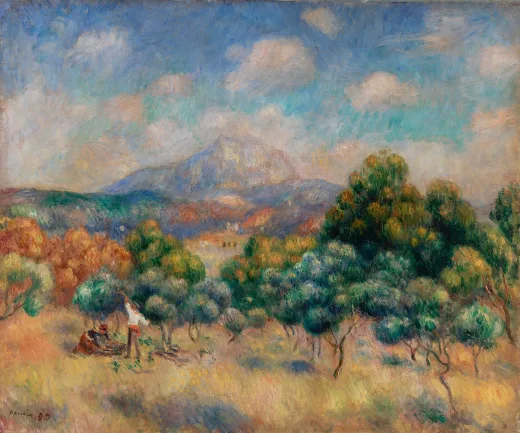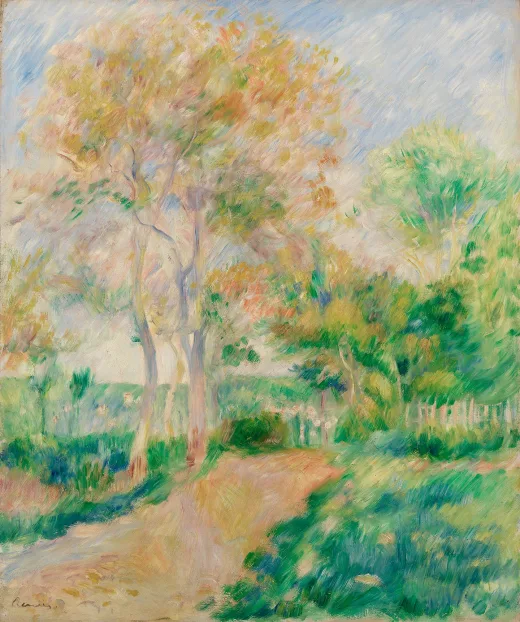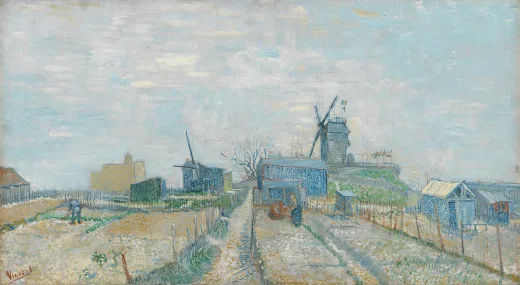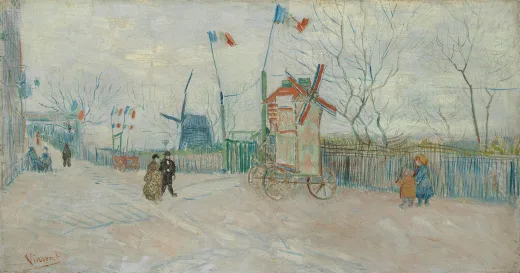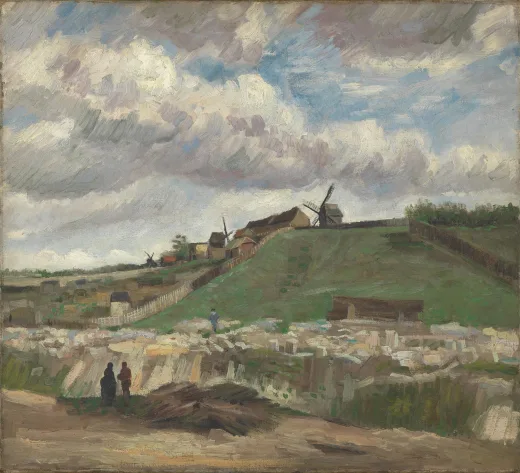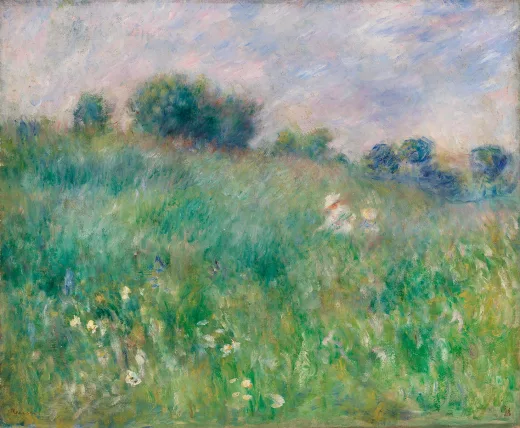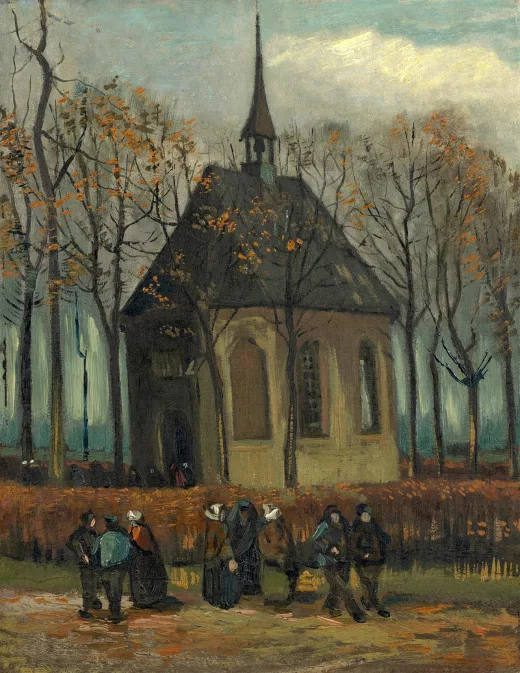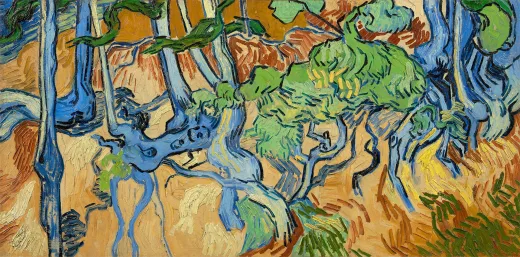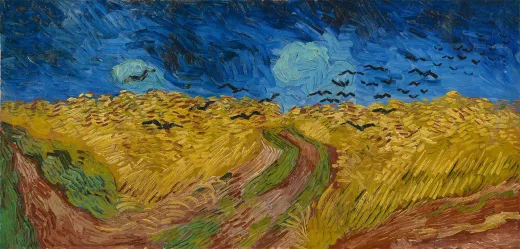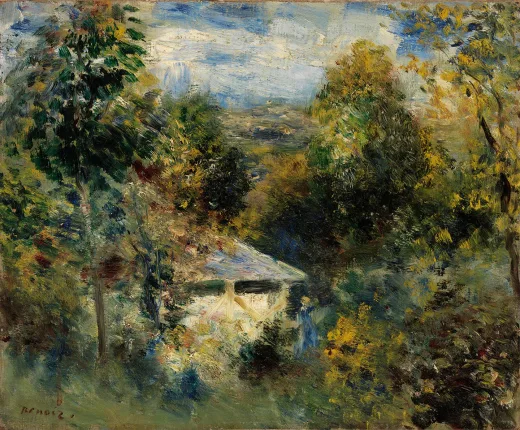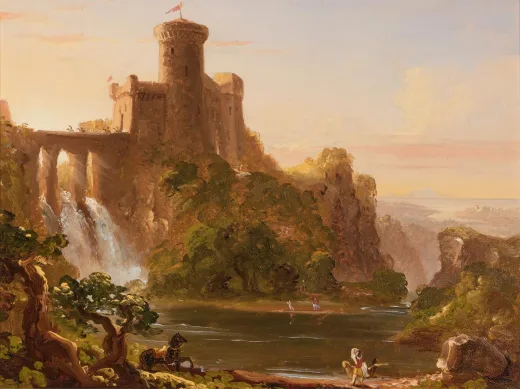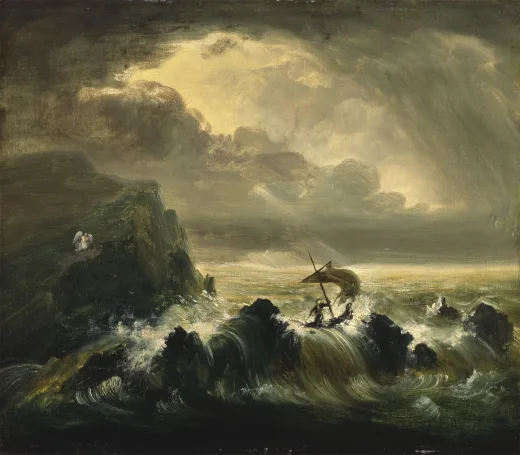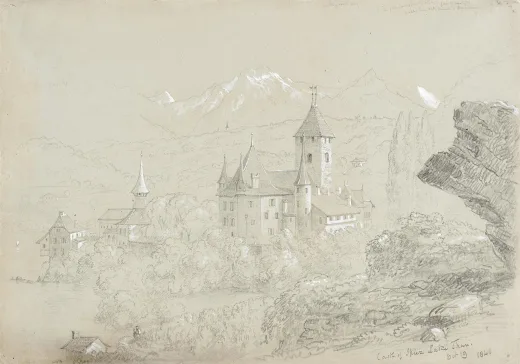托马斯·科尔油画作品《启程》高清图片
原图尺寸:4096×2540像素(72 DPI)高清图
下载原图消耗2艺点
文件大小:20.31 MB
下载格式: ZIP ( PNG+ JPG )
作品名称:启程
The Departure
作品作者:托马斯·科尔(Thomas Cole)
创作时间:1837年
作品风格:浪漫主义
原作尺寸:100.3 × 161.4厘米
作品材质:布面油画
收藏位置:美国国家美术馆
©CC0公共领域

作品简介
《启程》——骑士精神的晨光礼赞
(画面描述)
托马斯·科尔在这幅与《归途》对应的晨景画作中,将葱郁的山野化作中世纪传奇的舞台。画面横向展开:远处锯齿状山峰前,石堡矗立于林荫山丘;十八名披甲骑士执长矛沿桥径前行,在宏阔风景中显得尤为渺小。为首的骑士胯下白马配金络脑,猩红斗篷与盔缨猎猎生风,与队伍中淡粉、棕褐的斗篷形成色彩交响。左下方狭窄方尖碑处,队伍与一位白须老者相遇——他手持系棕榈叶的十字权杖,褐色长袍与警戒姿态暗示先知般的警示。
(艺术解析)
空间叙事:通过"骑士队列-方尖碑-城堡"的三段式布局,构建起从凡尘到圣域的视觉路径。独立拱门处的持杖男女与山羊,暗喻世俗与神性的对话。
符号系统:方尖碑顶的圣母圣婴雕像、城堡垛口的人影、湖面白帆,共同编织基督教远征的隐喻网络。
光色魔法:冰蓝色天幕下,珍珠母云缠绕峰顶,与《归途》的暮紫色调形成晨昏对话,实践科尔"光色即情感"的创作理念。
历史回响
1836年冬,受范伦塞勒委托创作的这对画作,延续了科尔在《帝国历程》系列中的历史沉思。正如《纽约镜报》1837年所言:"这些作品不仅捕捉了晨昏的光色奇迹,更以诗人画家的天赋,同时阐明了骑士时代的封建文明、人类在生命黎明时的激昂。"白马骑士的意气风发与《归途》中空鞍白马的意象,构成关于荣耀与陨落的视觉史诗,完美诠释了科尔倡导的"更高层次的风景"——将历史寓言注入自然的崇高之美。
Thomas Cole turns the landscape into a backdrop for a medieval tale inThe Departure, one of a pair of luminous paintings set at sunrise andsunset. The lord of a great castle and his company leave for a quest in the bright light of an early spring morning. They later return injured and defeated in the muted light of a late autumn afternoon.
In a verdant green landscape, a stone castle sits on a tree-lined hill in the distance in front of a high, craggy mountain peak while eighteen armored knights ride toward us along a bridge and path in this horizontal painting. The people whose faces we can see have pale skin. The knights are small in scale within the vast landscape, and they all hold long spears. Their procession is led by a knight on a white horse, which wears a gold bridle and lattice-like blanket. That knight has a ruby-red cloak over his armor, and his helmet has a red feathered plume. The other knights wear cloaks in tan, pale pink, or red, and some of their horses are covered with light brown blankets. Near the lower left corner, the path they ride on passes behind a tall, narrow plinth. The faces of the plinth are carved with pointed arches under ornate molding. A person atop the pointed, roof-like top of the structure stands facing away from us, wearing a robe. A gold halo is affixed to her head over long hair, and we see the small head of a baby over one crooked elbow. Near the base of the plinth, the horse at the head of the procession shies away from a man who stands to the side of the road a little farther along, near the bottom center of the painting. That man has a long white beard, and the brim of his hat is pushed back over his forehead, possibly pinned to the crown of the hat. He wears a loose brown robe and sandals, and a satchel is tied around his waist. He holds up one hand, palm out, toward the knights as he looks in their direction, facing our left in profile. In the other hand, he supports a tall staff with a knob at the center and a palm frond tied to the top. In that hand, he also holds a cross hanging from a string of red beads. As the path continues to our right, it passes an arched, free-standing structure, which has a fountain on the side facing us. A man holding a curved staff and a woman, both wearing togas, stand near the structure, looking at each other. On our side of the structure, a goat walks toward the fountain. A river extends behind the structure, back across the composition, and under the bridge leading from the castle. Tall or craggy trees grow along the side of the path as it winds into the distance to our left, and over the hill that rises to the crenelated castle complex. Touches of white and tan suggest people lining the walls of the castle and the tower over the drawbridge. A flat-topped, grassy butte rises beyond the castle, and a waterfall cascades over the edge near the drawbridge. Steep, hazy mountains rise sharply in the deep distance. Dashes of black paint indicate birds flying over the treetops near the castle, and minuscule white dots on the plateau could be grazing sheep. A town lines a body of water at the foot of the castle in the distance. White sailboats float in the water or are pulled up close to the shoreline. Opalescent white clouds curl up over the mountain top and ring the upper peaks in an otherwise clear, ice-blue sky.
In the mid-19th century, pure landscape pictures were traditionally ranked lower than other subject matter, such as themes from history, mythology, literature, or religion. Thomas Cole sought to create what he called a “higher style of landscape” that blended narrative elements into carefully executed scenes from nature. His use of two canvases allowed him to build his narrative to even greater technical and emotional heights.The Departureintroduces a troop of knights embarking on a heroic crusade in the early summer led by their lord on his valiant white horse. InThe Return, a smaller group—weary and defeated—trudges home in the autumn dusk; they carry the dying lord, his riderless horse trailing behind.
The two landscapes were commissioned as a pair by wealthy landowner William Paterson Van Rensselaer in December 1836, specifying only that the paintings should depict morning and evening. Cole had recently enjoyed critical and popular success for his epic five-canvas series,The Course of Empire(1836, The New-York Historical Society) completed earlier in the year, which likely made Van Rensselaer choose him for the project. That Cole achieved his goal of a “higher style of landscape” among his contemporaries is reflected in the praise the paintings received in an 1837New-York Mirrorreview:
These pictures represent Morning and Evening, or Sunrise and Sunset; and are, merely from that point of view, invaluable. They contrast the glowing warmth of one, with the cool tints and broad shadows of the other; and to do this is the work of a master, who has studied nature and loves her….Not only this is done, but a story is told by the poet-painter, elucidating at once, the times of chivalry and feudal barbarism, and the feelings with which man rushes forth in the morning of day and of life, and the slow and funereal movements which attend the setting of his sun.


